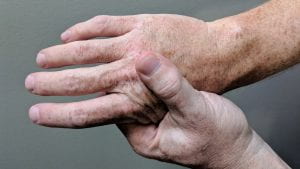Often times when we discuss injuries we have sustained, indelible memories of vivid childhood accidents will rush to the surface of our thoughts perhaps even causing minor physical discomfort in the body part related to the accident. For some of us, when certain graphic images of wounds are shown, we will begin to experience a tingling sensation in those areas of our own bodies. For others, remembering how they broke a bone can seem anticlimactic. So from these observations, the question arises: why do we each remember pain the way that we do?
In an article regarding mothers’ progressive memory of childbirth, the renowned online mental health resource Psych Central disclosed their groundbreaking research, which suggested a strong correlation between memory of childbirth and how many children these women ultimately had. About 50% of the mothers rated their childbirth as less painful than they did initially. While this data fails to suggest that the majority of women forget the intensity of their labor pains, it shows that a significant amount do. A potential explanation for this habit is that there is a positive correlation between being able to forget the pains of childbirth, and how many children one of the subjects had. This implies that being able to forget specific pains can be useful if the potential gain is more worthwhile than temporary pain.
However, on the other end of the spectrum, remembering pain can be used to prevent the acquisition of future injuries in the same way. Discovery Magazine released an article about how memories are linked with pain through a protein called PKMzeta. It goes into the synapses between neurons, and strengthens bonds. This creates more connections for vivid memories to arise. The PKMzeta protein forms new connections in the spine after painful experiences, the same way it does when we are forming new memories. Thusly, our pain is a sign of new knowledge.



saadoplasm
I found an article about how memories of pain don’t go away completely. Childbirth pain is extremely hard to measure. While it makes sense for childbirth pain to be removed from memories in order to ensure reproduction again, this BBC article claims it is not that simple. It is definitely about the timing of when the researchers interview the women and how long it had been since they gave birth. 60% of women still felt the same pain after 2 months and 12 months. Only one third didn’t remember the pain they felt 2 months after labor at 12 months. I think it’s very interesting how we might forget pain, but I think more research must also be done. Very cool! https://www.bbc.com/future/article/20150311-can-we-edit-out-painful-memories
glovcose
I found this post very interesting! It shows how, we as humans, are able to remember and forget pain. In this article I found, it talked about how our brains our smart and that we are able to determine when a stimulus that is causing us pain isn’t a threat even when are bodies may think it is. https://www.businessinsider.com/why-we-think-pain-feels-good-2018-4 It was really interesting to think about pain in a way I never have before!
Bronchiolon
Job well done! I loved how your article explored the advantages of both remembering and forgetting pain. A study in Current Biology—https://www.ncbi.nlm.nih.gov/pmc/articles/PMC4295114/—- tested the defensive response of squid to predators in order to test the advantage of nociceptive sensation, the effect of specialized sensory neurons (nociceptors) that detect harmful stimuli and induce a behavioral response through the nervous system; in short, they were testing the advantage of prolonged pain sensitivity. They found that the injured squid that had the nociceptive sensations were faster in responding to the predatory threat than the non-injured squid.
nukellyicacid
Great job! I’ve never known that in order to maintain long term memories a protein had to create connections in the spine. Adding on to the mechanisms that form memories, I’ve attached an article that discusses how old memories can be removed from our minds. The study demonstrated that a chemical called anisomycin suppresses the production of receptors that neurons need to form memories. https://www.pbs.org/wgbh/nova/article/chronic-pain/
helenogenous
Great article @YUSRNA! I loved learning how the same protein was involved in forming new memories and after painful experiences. I found an article that builds on yours: https://www.discovermagazine.com/planet-earth/a-memory-for-pain-stored-in-the-spine. This article elaborates on the role that PKMzeta plays in pain and its correlation to memories. The article reports that people continually recreate PKMzeta at synapses to keep our memories alive. If the protein disappears, so do our memories. How cool! Do you think based on this article/blogpost and their findings, that PKMzeta may play a role in Alzheimers or other cases of dementia?
Charlo Englaeic-acid
Wow! great article, possibly the most well-written I have read so far. I found it enigmatic yet thought-provoking. I found another article about this topic, similarly short length, it mentions primary sources from a different doctor than the one in the article, and I think would be a good read. https://www.huffpost.com/entry/protective-pain_n_5618802
Quadruplex DNA
I think this article is very well written and shows how we humans are able to remember pain and additionally how they become stronger because of it. I also liked how the article talked about the childbirth which was a perfect example of how people remember pain. The one question I have is why do humans have this ability to forget their pains?
https://www.health.harvard.edu/mind-and-mood/6-ways-to-use-your-mind-to-control-pain